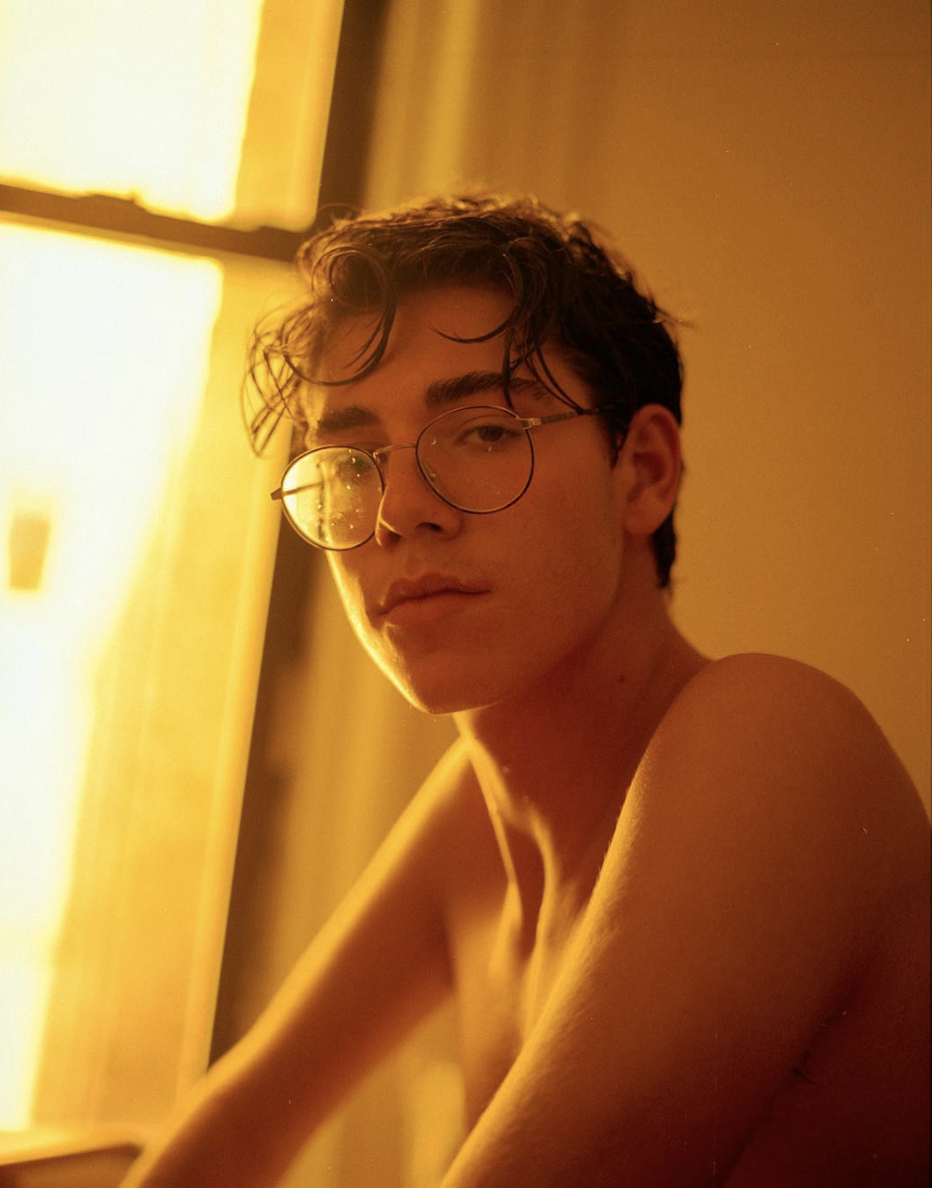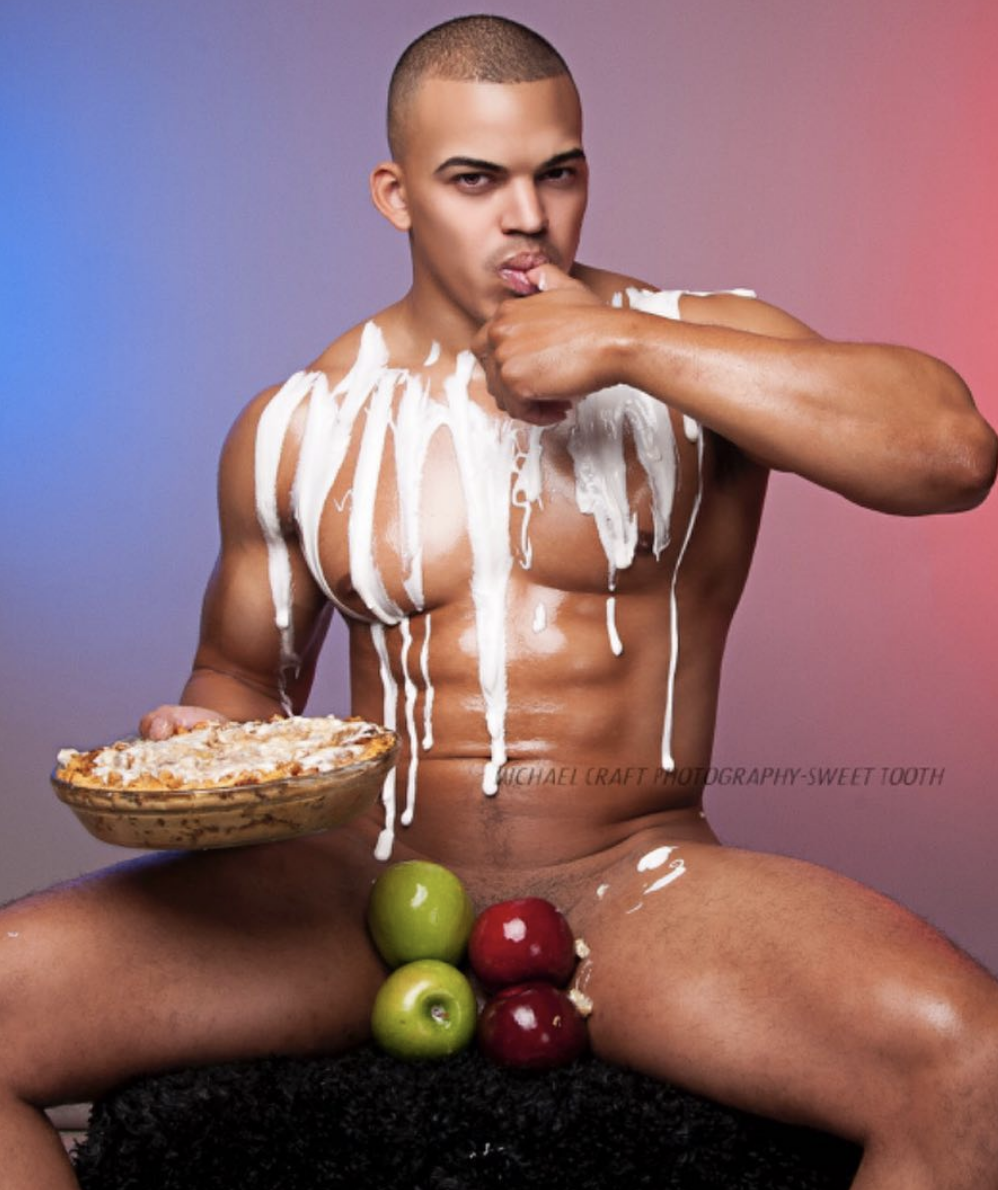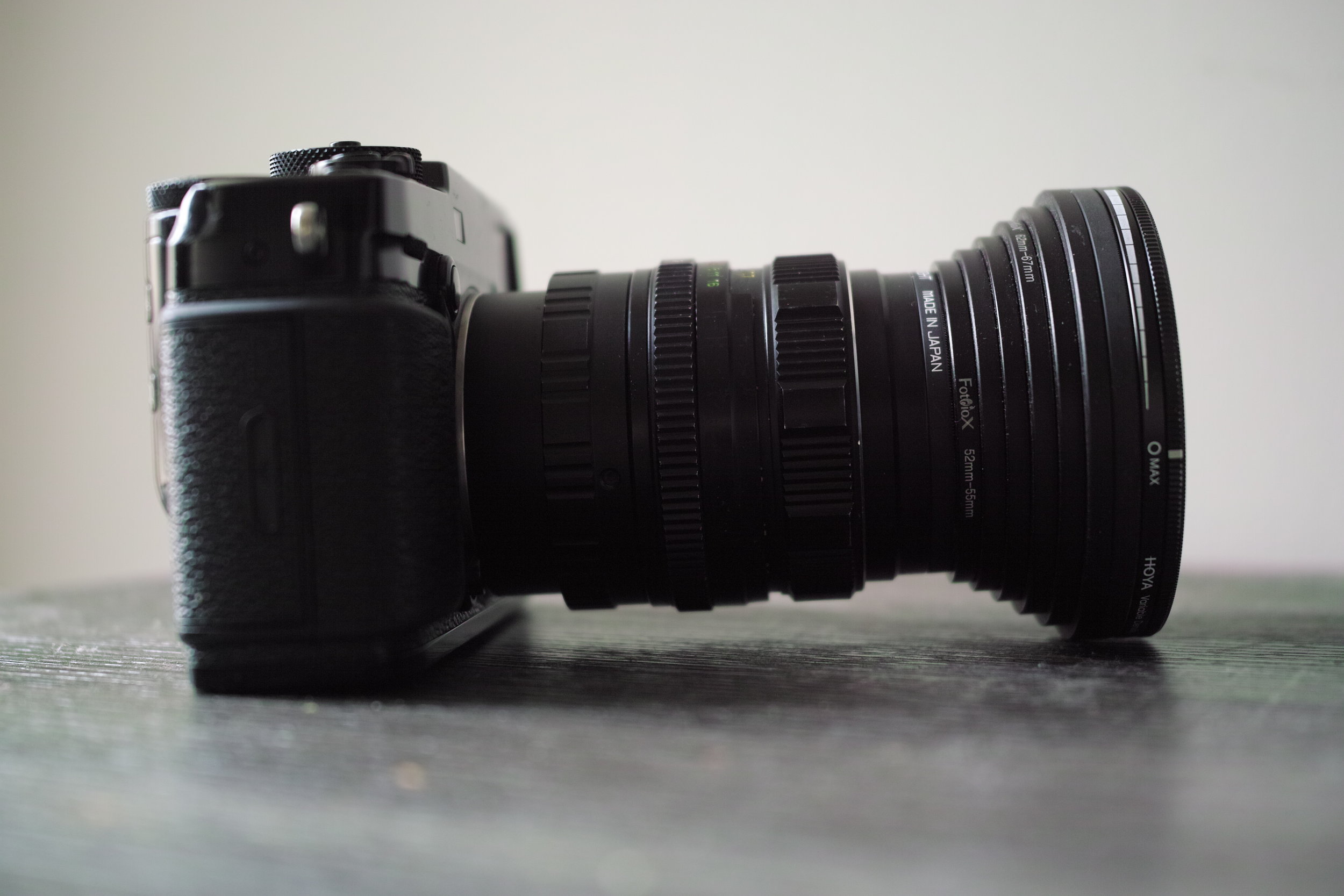Deconstructing Robert Mapplethorpe: The Honesty in Commodity
Self-Portrait, 1980 – Robert Mapplethorpe
Robert Mapplethorpe's (1946 – 1989) legacy resides in a hallowed pantheon alongside Andy Warhol, Jeff Koons, and Madonna.
These New York artists of a certain era integrated the performance of their career indistinguishably from their body of work: they delighted in the entrepreneurial and social mechanisms of the art world, and in all the rewards that came along with playing the game well.
Mapplethorpe was a visual artist since early childhood: first drawings, then paintings, then collages, and, finally, photographs.
His preferred subject matter was of homosexual deviance – specifically the BDSM scene of 1970s and early 1980s New York. His acclaimed work would go on to legitimize photography as a sophisticated medium for the first time in the contemporary art world and spark heated debates on the senate floor about the allocation of public funding for the arts.
But what truly canonized Mapplethorpe as an icon was not his controversial subject matter or his formalist mastery. It was his unflinching honesty, evident both in his work and in his lifestyle.
From the "Black Book", 1986 – Robert Mapplethorpe
To be a commercially successful artist is to temper authenticity with commodification. This balancing act would typically embroil the artist in an existential tug-of-war between mania and self-loathing – but not the sure-footed Mapplethorpe, who viewed his reputation as a performative extension of his photographs.
“The whole point of being an artist is to learn about yourself. The photographs, I think, are less important than the life that one is leading.”
In 18 short years, Mapplethorpe shot, swaggered, and slept his way to the top of the ladder. His beauty and talent secured total dominance in the art world as the preeminent photographer of the era – glossing penthouse walls and designer coffee tables with massive prints of erect penises in his wake.
EARLY LIFE AND CAREER
Mapplethorpe's famed confidence was not unfounded. He was magnetic, and he was handsome, described by friend and writer Fran Lebowitz as a 'ruined cupid'. Born and raised in Queens, his working class Irish Catholic family never missed Sunday mass at Our Lady of the Snows parish, where Mapplethorpe was an altar boy. He graduated high school at 16, and his family supported him during his LSD-hazed tenure at Pratt Institute – though, true to form, he dropped out just before finishing his degree.
It was only after his time in art school, holed up in the smallest room available in the Chelsea Hotel with lover and collaborator Patti Smith, that Mapplethorpe began to explore photography in earnest.
In 1970, Mapplethorpe began snapping Polaroids of his friends both on a whim and out of necessity. He had been using imagery foraged from postcards and magazines for his collages, but he was dissatisfied by a sense of creative thievery. Above all else, Mapplethorpe wanted to fully own his output – to attribute his success to nobody but himself.
It was only after he learned of the divinity in the relationship between photographer and subject that his true passion – and talent – began to take shape.
Ken Moody and Robert Sherman, 1984 – Robert Mapplethorpe
When looking to contextualize Mapplethorpe's body of work, his childhood offers few clues. He was a notably shy and sensitive suburbanite, and he was passionate about drawing. His self portraits, scribbled in crayon, would often feature surrealist touches – green faces, or purple hair. His adolescence was prescient: by high school, he knew he wanted to be an artist, "whatever that was". His paintings were distinctly inspired by Picasso.
His father was a hobbyist photographer, which might explain why it took Mapplethorpe so long to explore the medium.
It's common for queer artists to experience a creative rebirth once they've escaped their childhood home and expectations. Usually, though, the vestiges of familial misunderstanding go on to influence and motivate the artist, just under the surface of consciousness. Later in his career, when asked about his father, Mapplethorpe stated, “I would never have done what I’d done if I’d considered my father as somebody I wanted to please.” But when Mapplethorpe's younger brother came to view his explicit photographs in his loft on Bond street, Mappelthorpe asked him, "What do you think dad would think about this one?"
This punk-rock sensibility shouldn't be misconstrued as reactionary inauthenticity, but rather as the understandable condition of a gay artist reared in conservatism. No doubt, Mapplethorpe lived his 'shock art'. To him, fisting and leather sex weren't curiosities or rebellions – they were celebrations. It was conservative America that was low-brow, and the responsibility of their scandalized reaction to his plain honesty rested solely on their own shoulders. To be queer is to be rebellious and authentic all at once. To be queer, prodigal, and charismatic? Everything that might've sabotaged Mapplethorpe – his hedonism, his obsessions, his narcissism – only accelerated his celebrity.
Mapplethorpe wanted to be famous more than anything, and he made no secret of this. When he vacationed in Fire Island with a recognizable Swedish porn star, he was thrilled by the attention – but resentful that his own star power hadn't yet ascended. Instead of enjoying a summer of cruising like the rest of his company, Mapplethorpe caught an early ferry back to Manhattan to begin shooting more work.
Skull (1988) – Robert Mapplethorpe
Art to Mapplethorpe was intensely personal, but he had long recognized the potential for wealth and notoriety in commodified art, and he became obsessed with earning those things for himself. Mappelthorpe was extremely competitive, but he didn't view the politics of the scene as a zero sum game. His ambition wasn't necessarily to be the best artist, but to have the material and spiritual possessions that came along with it.
Critics condemn his confidence as arrogance, his exhibitionism as megalomania. The truth likely falls somewhere in between. But the failure of a moralistic approach to Mapplethorpe lies in the attribution of traditional values to a man who never quite agreed to abide by them in the first place.
Mapplethorpe's lifelong friend and fellow New York artist Patti Smith put it best: “Much has been said about Robert, and more will be added. ... He will be condemned and adored. His excesses damned or romanticized. In the end, truth will be found in his work, the corporeal body of the artist. It will not fall away.”
In turning to his work for solid ground, we're left with even more uncertainties.
Robert Mappelthorpe
ROBERT MAPPLETHORPE'S BODY OF WORK
“I’m looking for things I’ve never seen before. But I have trouble with the word ‘shocking’ because I’m not really shocked by anything…Basically, I’m selfish. I did those photos for myself— because I wanted to do them, because I wanted to see them. I wasn’t trying to educate anyone. I was interested in examining my own reactions.”
At the beginning of his career, Mapplethorpe was sated by snapping Polaroids of his friends and incorporating them in to his collages. He soon found himself spending hours searching corner stores for old photo prints, studying the compositions. Mapplethorpe's approach had always been exceedingly technical, and the limitations of his lo-fi Polaroids began to show.
When he graduated to a medium format Hasselblad in 1975 - a gift provided by his wealthy lover – his study of light and form became even more precise.
Mapplethorpe quickly discovered the utility of sexual engagement with his subjects. There were was no pretense between he and his models – oftentimes, the men in his photographs had just been brought back to his loft from the Mineshaft, a gay fetish club in Greenwich village. In his experimentation, Mapplethorpe would push and project his sexuality on to his subjects, and it was this creative direction that colored each of his photos with the consistency of a self portrait.
Dominick and Elliot 1979 – Robert Mapplethorpe (Censored)
Nina Simone famously claimed that an artist's duty was to reflect the times. Mapplethorpe, fixated on his own compulsions of sex and symmetry, could be seen less as a mirror and instead a symptomatic response. His perversions were celebrated – perhaps exalted – in the narrow spaces between the warehouses and cobbled roads of the Meatpacking district, but that explosion of sexual energy – what Mapplethorpe would sanctify as 'true magic' – scattered to the shadows when the sun rose.
But what would his artistry look like in a world that embraced homosexual worship of masculinity? Would it still drip with perversion and danger? Would his exploration veer further into darker corners?
Mapplethorpe confessed his attraction – and compulsion – to finding the Devil in his subjects. What might the Devil look like to Mapplethorpe if his sexuality had not been vilified by a Catholic upbringing? Would his lens have turned on subtler things – the institutional evils of the world? Or would his self-centered sadism have exposed an even more intimate side of himself?
“There was a feeling I could get through looking at porn imagery ... if I could get that across and make an art statement – do it in a way that reached a certain kind of perfection - that I would be doing something that was uniquely my own.”
But there should be no shame in Mapplethorpe's narcissism. Being raised Catholic in the 1950s, Mapplethorpe's own id was as warranting of study as any. Queer artists are innately political, and Mapplethorpe understood this well. A year before his death, he founded the Robert Mapplethorpe Foundation to handle his official estate and funnel millions of dollars into AIDS research.
The rumblings of a culture war had begun to coalesce during Mapplethorpe's career zenith, but it wasn't until his death that it truly erupted. Elevating his celebrity to the stage of political theater, Republican Senator Jesse Helms lead the crusade against Mapplethorpe's controversial work on the senate floor and argued against state funding for the arts.
ROBERT MAPPLETHORPE'S FLOWERS
While Mapplethorpe maintained razor focus on sex during the peak of his career, some of his most celebrated images centered around still life flowers.
Stricken with rapidly failing health from AIDS-related complications, Mapplethorpe turned to intense anatomical studies of flowers – and statues, and other inorganic objects – perhaps as his ability and desire to sexually engage with other men faded.
The flowers series was Mapplethorpe's art at it's most commodified. Confronting his own mortality and panicked to establish legacy and wealth, he shifted his artistic focus. “Sell the public flowers,” he declared. “Things that they can hang on their walls without being uptight.” Yet, to the viewer, the photographs are imbued with the same threateningly intimate authenticity and sensuality of his explicit erotica.
This was what made Mapplethorpe so impressive: the ability to force his narrative into the most digestible art, though still choosing to court controversial subject matter with a steady hand. Rather than a crutch, the male body, splayed and erect, was simply the vehicle he preferred – but his technical mastery of light and composition could express the subtelties of his very human obsessions in thoroughly abstract mediums.
Parrot Tulips, 1988 – Robert Mapplethorpe
This excerpt from his lover Jack Fritscher offers additional contexts for the flower series:
“Suspecting the worst, Robert sped up the quantity and quality of his work to express his soul and build a legacy of more than 120,000 pictures,” Fritscher writes. “As his healthy beauty time-lapsed fast into the stoic beauty of the dying, he did not like eyes looking back at him through the camera. So he shot flowers and statues and objects that obeyed his direction and made no demands.”
THE POST HUMOUS IMPACT OF ROBERT MAPPLETHORPE
We see Mapplethorpe's influence further still in the 2000s, as queer photography becomes democratized by accessibility: the homogenizing crunch of social media algorithms, a gradual mainstream curiosity, and the ubiquity of digital cameras.
Contemporary gay photographers seem to ally in one of two dichotomous camps: the hyper-sexualized pin-ups, appropriations of the iconic gloss and flamboyancy of vintage Playboys (though these subjects typically carry 200 pounds of muscle and leather on their back) – and the soft, younger, thoughtful men who explore their femininity and boyishness through dreary pastel tones and eased window light.
(From left to right: Ryker Allen, Michael Craft)
But whether it's pop art with bright, loud indulgences or conceptual art laced with metaphor and subtleties – whether the worship is at the altar of muscle or youth – the formalist exploration of the homosexual gaze will always be inescapably rooted in Mapplethorpe's work. Because there is massive artistic capital in doing it first, but even moreso in doing it right. Mapplethorpe accomplish both.
Analysis and theory aside, the charm of Mapplethorpe's photography is that it can be seen by queer people as a dog whistle. Imagery that challenged or intimidated the laymen – the brandished threat of bright, shiny weapons corroborated by contorted muscles and aroused red cocks – was read in an entirely different alphabet to a queer audience.
Frank Diaz, 1979 – Robert Mapplethorpe
For Mapplethorpe's voyeurs, those many straight art critics and sophisticated vultures to the underbelly of New York, Mappelthorpe was a brazen formalist-cum-shock artist. But to his own community, he validated their common degeneracy with the gentle sophistication that only a talented artist could afford – flying just below the radar, to his queer family, seeing Mapplethorpe's work celebrated by the elites meant having bareback sex on display in the Met. An inside joke, an honor, and a victory.
And therein lies the brilliance of his ruthless careerism and legacy. In creating art solely for himself, Mapplethorpe substantiated his social climbing with what could be called artistic honesty – art that effortlessly straddled a sexual dichotomy, a class dichotomy. Never pandering, never a gay Uncle Tom. His art evolved, it commodified, but his visual language remained rooted in the magic and perverse intensity of a wholly queer and dangerous life.
This Warholian disposition – a shotgun marriage of business and art, speaking truths from both sides of his mouth – cements his status immortally as both a cult queer icon and a celebrated master of the arts.
Two Men Dancing, 1984 – Robert Mappelthorpe

















